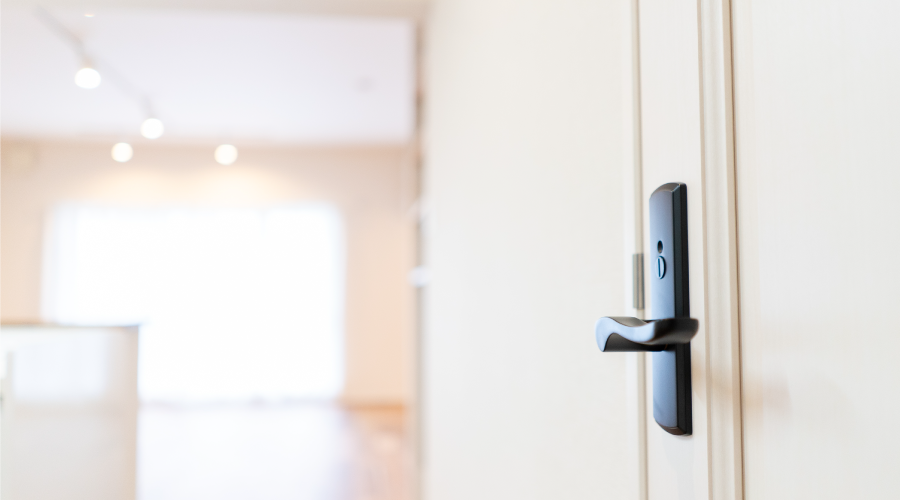Door Trouble Spots Include Closers, Hinges, Handles
Updating an inspection program for door hardware, such as closers, operators, hinges, handles, and emergency hardware, should include a focus on the known maintenance challenges in any given facility.
Among the more likely trouble spots are: worn handles; misaligned latches and strikes; worn hinges; misaligned door and frame; loose frame; worn sills; hydraulic closers leaking fluid; closers out of adjustment; building settling causing misalignment; worn weather seals; and worn or broken locks. Keeping these components in good repair will ensure optimum freedom of access and egress, while assuring that the building is secure.
Closers provide protection against damage from slamming. They also ease the operation of heavy doors and ensure secure latching. A specially designed form of closer, a closer-holder, is an electro-mechanical device that links with the fire-alarm system. It holds a door open until a fire alarm sounds, or the door can be closed manually or from a remote location. This type of closer on interior fire rated doors might be the answer to hydraulic failures, misalignment and other damage, and it might extend the maintenance-free life of the closer.
Two of the most common door operator trouble spots involve remote access that does not work and a door that moves part way and then reverses. In the first case, the system's antenna might have been moved. It should hang unobstructed to ensure it picks up the remote signal.
The door reversing problem usually is related to misalignment of the photo-sensor transmitter and receiver attached to the bottom of the opposite door rails. When alignment is correct the receiver reads the beam from the transmitter. Both have added lights on the side that remain on and steady when aligned. If either light is off or blinking, it needs to be realigned to get the signal.
Hinges ordinarily can withstand many cycles with little maintenance, unless they are abused. One way this abuse occurs is when a user holds open the door by inserting a block of wood or a coin in the door next to the hinge. The closer is trying to close the door, while the block or coin is forcing it to stay open. The result is often a bent hinge, bent frame or sprung door.
After several such occurrences, the handle latch and strike become misaligned. So when the door closes, the latch misses the strike opening, and the door does not lock, causing a security problem.
Related Topics:













